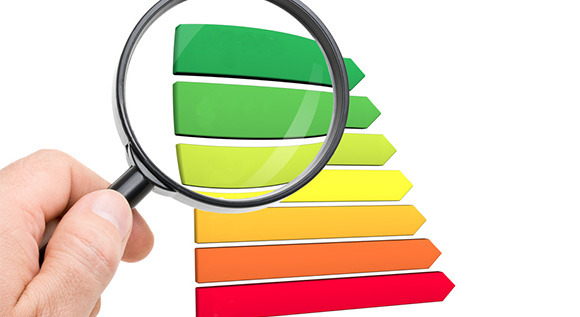How do you read the ‘energy label’ for old boilers?
In future, a host of multi-coloured efficiency labels will name and shame inefficient heaters – no matter whether they are old or new. January 2016 will see the introduction of the energy label for old boilers. But: how do you read an ‘energy label’ correctly, and are they all the same?
 © Fotolia.com/Shawn Hempel
© Fotolia.com/Shawn HempelMeeting energy-efficiency standards
A growing number of products such as washing machines, fridges and vacuum cleaners are to meet minimum energy efficiency standards in order to help reduce energy consumption in Europe by 20 per cent by 2020. These products are furnished with a multi-coloured label – the ‘EU energy label’ – similar to the one that your washing machine might carry. The label helps consumers to quickly assess how environmentally friendly their appliances are. In September, two product groups were added to the list: new space and water heaters.
New label for old boilers to be introduced in January 2016 – only in Germany
But the European energy label is not all there is. In January 2016, Germany will introduce a new label – looking very much like the EU energy label – for boilers that are older than 15 years. This label will be required exclusively in Germany. In the next eight years, around 13 million boilers will have to be labelled by experts such as heating technicians and chimney sweeps. Having your boiler labelled is free of charge. But what information does the new label for old boilers provide?
Is my boiler fit for the future or does it need replacing?
The label helps you to quickly assess whether your boiler is fit for the future, or whether it may be worthwhile to replace it. Dark green means that a product is highly energy-efficient or uses renewable energy, red is for inefficient products, and there are various other categories in between. The letters A++ to E are added to reflect the seven different efficiency classes.
Products featuring letters ‘A++’ or ‘A+’ are highly efficient or use renewable sources for generating heat. This includes geothermal or groundwater heat pumps, air-heating pumps with or without solar energy, and small combined-heat-and-power units. In addition to this, some condensation boilers (gas and oil) with solar energy also come under ‘A+’. Condensation boilers without solar energy (gas and oil) carry an ‘A’ or ‘B’ label. Low-temperature boilers (gas and oil) and standard boilers (gas and oil) are considered outdated and inefficient. They are labelled ‘C’ or ‘D’ and should be replaced.
Not all labels are the same
Don’t get confused. The label for old boilers only applies to Germany and is different from the ‘EU efficiency label’ carried by new space and water heaters. More detailed information can be found in the Federal Ministry’s ‘leaflet on how to conserve energy by using energy-efficient heating systems’.
An old heater rated ‘A’ is just as efficient as a new heater of the same efficiency class. This means that you can compare both labels when buying a new heater.
The new German label is to help improve the European one
Unlike the European energy label, which is used from Sweden to Malta, the new German label for old boilers is not language-neutral. While the EU label features the letters ‘ENERG’, the German one reads ‘ENERGIE’.
Some products are even rated A+, A++ or A+++. These grades were introduced to keep up with advances in energy efficiency. The ‘A to G’ scale simply wasn’t enough to distinguish between the most efficient products anymore. In order to have one unified label again, which will be easier to understand for consumers, the European Commission has proposed going back to the ‘A to G’ scale by gradually phasing out the ‘A+ to A+++’ categories. Furthermore, all product types carrying a label are to be included in a product database. This will help encourage consumers to opt for an efficient product.

